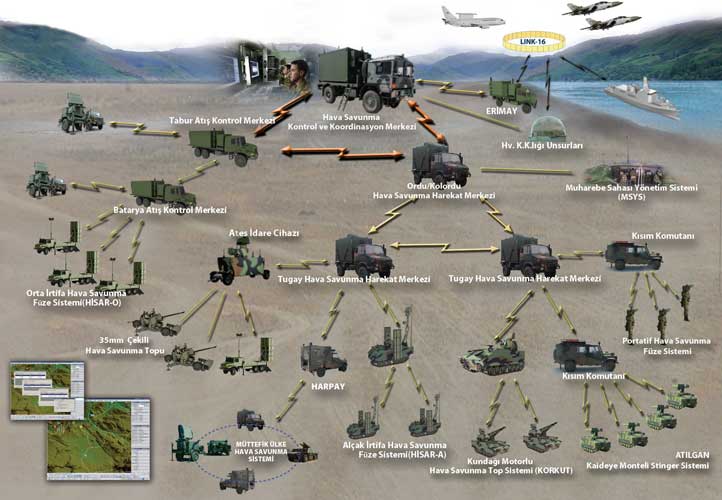ASELSAN tarafından Türk Kara Kuvvetleri Komutanlığı’na yönelik ilk Hava Savunma Erken İkaz ve Komuta Kontrol Sistemi (HERİKKS-VI) teslimatı gerçekleştirildi.

www.savunmasanayist.com
ASELSAN made its first HERİKKS-VI delivery.
ASELSAN delivered the first Air Defense Early Warning and Command Control System (HERİKKS-VI) to the Turkish Land Forces Command.
The Air Defense Early Warning and Command Control System (HERİKKS) is used to carry out the air defense activities of the Land Forces Command and to fulfill the command and control task for air defense units from the army level to the level of the division commander effectively and quickly. For this purpose, the Air Defense Early Warning and Command Control System (HERİKKS-VI) Command Control Equipment and Information Equipment Contract was signed between the Ministry of National Defense and ASELSAN on December 21, 2016.
The first delivery of the contract was completed with the acceptance tests conducted with the participation of the representatives of the Ministry of National Defense and the Land Forces Command. With the delivery of HERİKKS-VI, the integration of new air defense systems (HİSAR-A, HİSAR-O, KORKUT, AİC, BKKM, KALKAN, Portable Missile) to the HERİKKS system is ensured, and information exchange with other command control systems within the Turkish Armed Forces and NATO ability is gained. In this way, the air defense efficiency of the Land Forces Command is significantly increased.
Air Defense Early Warning and Command Control System HERİKKS creates a real-time weather picture by combining the information received from air defense radars and ensures the most appropriate target-weapon allocations with the Threat Assessment and Weapon Allocation algorithm. The system has been actively used since 2001.
HERİKKS includes integrated command control units, air defense weapons, air defense radars, communication units and air defense system software. The system has an open architecture suitable for the integration of different types of radar and weapon systems and a modular hardware and software infrastructure operating in a distributed architecture.
General features:
Real time fused aerial image
Manual, semi-automatic and automatic target-weapon matches
Control of the airspace
Providing situational awareness
Information of friendly / enemy units Information on the battlefield
Methodological Control Measures
Tactical Data Link (Link-16, JREAP-C, Link-11B, Link-1) capabilities
Flexible Configuration
Electronic warfare resistant and fast TASMUS communication infrastructure
Embedded simulation capability
Moving working ability
Open infrastructure for the integration of different types of radar and weapon systems












